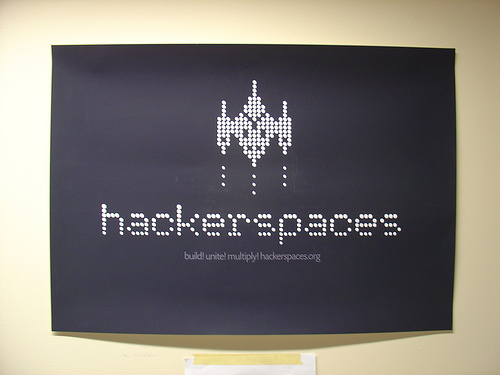Hackerspace: A Growing Phenomenon Within L.A.’s Start-up Scene

The start-up scene in L.A. is thriving thanks in part to the emergence of early stage incubators and accelerators. And the “Silicon Beach” attitude along with the rise of 3-D Printing is ushering in a completely new way of thinking about unused manufacturing space in Los Angeles.
The expansion of L.A.’s start-up ecosystem has ignited a collaborative spirit that has led to the growth of a maker community.
According to Represent LA, there are 797 start-ups in the greater L.A. area, with 31 incubators, 20 accelerators and 59 early stage investors.
And there are currently 9 hackerspaces in the greater L.A. area with specializations ranging ranging from space to biotechnology.
A hackerspace is about what your imagination would have you believe. It’s a bunch of nerds hopped up on Red Bull making stuff. It may seem insignificant, but a growing hackerspace scene is crucial to L.A.’s development as a start-up community.
Not only are these spaces important for entrepreneurship, they are also important for the larger community. Crash space, located in Culver City, has become a hub for anyone looking to create something, regardless of skill levels.
Sean Bonner, founder of Crash space, says that no two spaces are alike.
“Individuals create the personality of the hackerspace as much as anything else, so each [space] is a representation of the interests of the members, and as unique and individual as they are,” Bonner said.
Another L.A.-based hackerspace, Null Space Labs, has woodworking tools and work stations, but they consider their most important function as providing a “creative environment that is open to all visitors.” Null Space Labs has an open door policy for all visitors and says in its mission statement tha its is “the only hackerspace that isn’t saving the world.”
Those that are trying to save the world tend to focus on 3-D Printing.
Many of these spaces are equipped with 3-D printers, and 3-D Printing classes are offered to bring those interested up to speed, and the environment is welcoming.
The rise of 3-D printing has given way to a whole new world of manufacturing possibilities. 3-D printing technology, which used to cost thousands of dollars, can now be purchased for about the same price as a nice laptop.
If you can think it, you can print it. And as new products emerge from 3-D Printing, creators will need a space to collaborate, build, and prototype.
Entrepreneurs have taken notice.
Dylan Watkins, who owns a food truck in Southern California called Burger Monster, recently made prototypes of his invention Teabag Buddies using a 3-D printer shop called Build Shop.
Build Shop gives access to entrepreneurs to print their own prototype. It also gives them the ability to manufacture an item after a customer buys, as creation time has gone from weeks to minutes.
Soon, stories like Dylan’s will become the norm.
As demand for 3-D printing grows, interest in hackerspaces with 3-D Printers, classes and supplies will also grow.
Reach staff reporter Ryan Shaw here.



